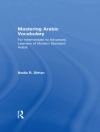Because high-level comprehension cannot be divorced from wide-ranging texts
To be literate is to think through multiple perspectives, exploring diverse texts, and using the power of story to give students the life skills to discuss just about anything with critical curiosity. Critical Comprehension transforms this vital work into an accessible, three-step lesson process.
Using picture books, multimodal texts, and thoughtfully framed questions, each differentiated lesson expands students’ understanding of a text through:
- First read: the ‘movie read’, during which the text is read without interruption
- Second read: The teacher poses questions that probe deeper meanings through interaction with the text to summarize, name and highlight issues, analyze and infer, to make more informed decisions about what to believe and what to question.
- Third read: Harnessing students’ curiosities, the class revisits the text to talk back to theme, symbols, central idea, or social, cultural, historical influences at work on author and audience
Popular media, classic novels, breaking news — the world’s content is ready for students to absorb. But are we ready to help them read it well? Equipped with this resource, the answer is, Yes, we are.
Зміст
Introduction
Chapter 1: What is Critical Comprehension
Chapter 2: Exploring Individual and Collective Identities
Chapter 3: Perspective
Chapter 4: Examining Stereotypes
Chapter 5: Confronting Bias
Chapter 6: Interrogating the Past and the Present
Chapter 7: Consuming Critically
Conclusion
Про автора
Katie Kelly is a Professor of Education and Coordinator of the Literacy Graduate Program at Furman University in Greenville, SC. As a former teacher and literacy coach, Katie’s teaching and research interests include engaging children in meaningful literacy experiences and practices to foster lifelong literacy, equity, and justice. She is widely published in several peer-reviewed journals including The Reading Teacher and Voices from the Middle. She has co-authored three other books: Reading To Make a Difference: Using Literature to Help Students Think Deeply Speak Freely and Take Action (Heinemann), From Pencils to Podcasts: Digital Tools to Transform K-12 Literacy Practices (Solution Tree) and Smuggling Writing: Strategies that Get Students to Write Every Day, in Every Content Area (3-12) (Corwin). She can be contacted on Twitter @ktkelly14 and by email [email protected].
![Lester Laminack & Vivian Maria Vasquez: Critical Comprehension [Grades K-6] (PDF) Обкладинка Lester Laminack & Vivian Maria Vasquez: Critical Comprehension [Grades K-6] (PDF)](https://static.worldofdigitals.com/info_webp/432/9781071905432.webp)











